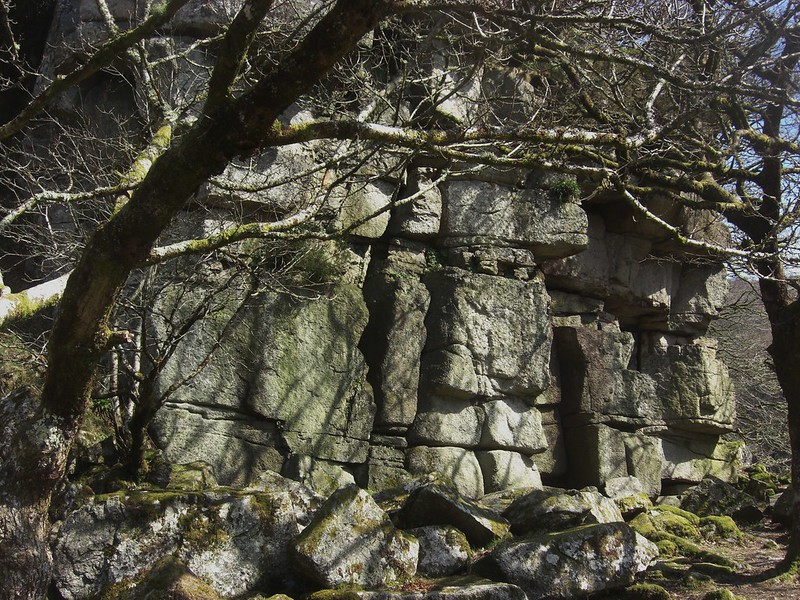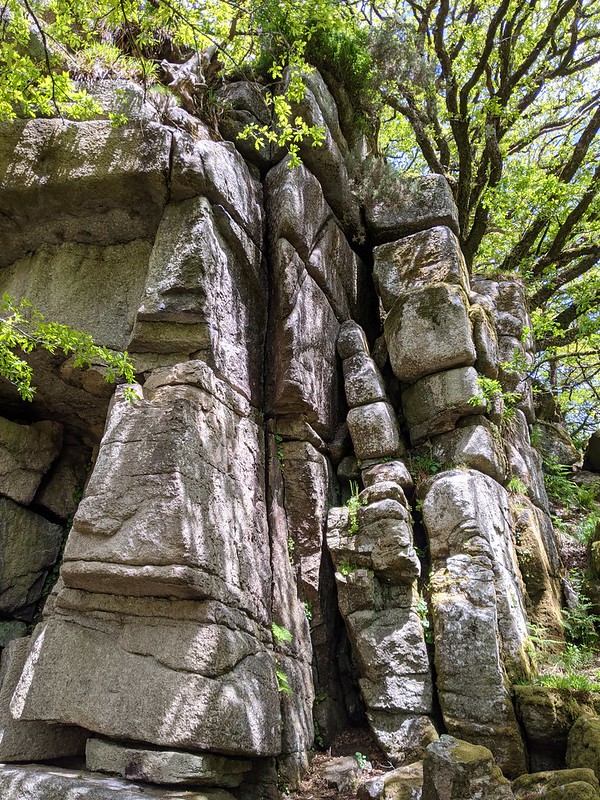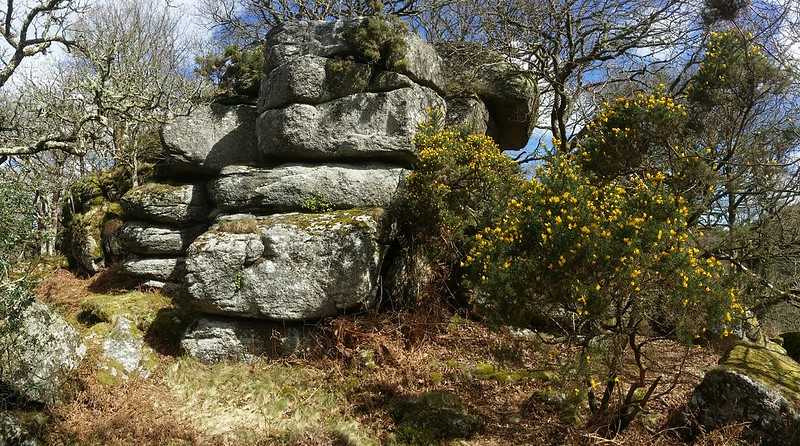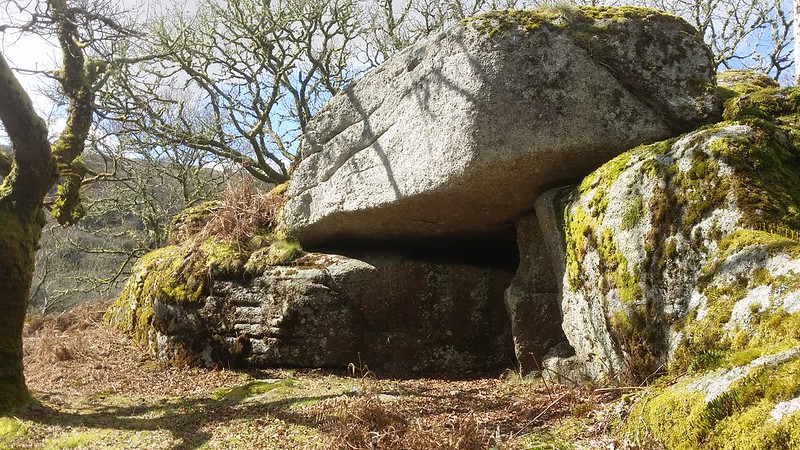TORS OF DARTMOOR
a database of both lesser- & well-known rocks and outcrops
Luckey TorLug Tor, The Eagle Rock, Looka Tor, Lucky Tor, The Raven Rock, Logator  A truly huge granite tor can be found deep within the woodland that encloses the River Dart between Dartmeet and New Bridge. From the former, a well-trodden footpath leads directly to Luckey Tor from the west, but this has become seriously compromised in recent years with river bank erosion across sections of the main path that has created occasional diversions across boulders, but with care and perseverance it is manageable and provides the simplest and flattest route to the rocks.  By taking this approach, you will first arrive at the base of the tor where its enormity is fully realised with an enormous granite cliff behind a grassy plain where Row Brook flows. This is simply one of the grandest tors to be found on Dartmoor and its prominent craggy mass is enhanced by its position deep within the sheltered Dart Valley, allowing for intense growth by bracken in summer months and several varieties of moss and lichen to thrive. Luckey Tor has for obvious reasons therefore been described with great enthusiasm by writers, notably Eric Hemery who remarks that "this lofty riverside bastion with a bold, light-coloured facade was a natural watch-tower for the confederates of those who were poaching, smuggling or sheep-rustling under the concealment of the heavily wooded sides of the gorge". And in the same work, "the spelling Looka Tor (riverside elevation 700 feet) best represents traditional pronunciation."  A legend, probably first reported by William Crossing in the late 19th Century, is associated with the Dart just below Luckey Tor, one with an enigmatic ending. It concerns a young cowman Jan Coo of nearby Rowbrook Farm, and the story goes that one winter's evening he heard a voice in the valley and went to investigate with other men from the farm, the cry was heard as 'Jan Coo! Jan Coo!' But nobody was found during a search of the valley-floor. The same thing happened a few nights later, and when the men answered to the call the voice stopped. A third incident happened one evening next spring but this time, when Jan went to investigate on his own, his companion became worried as darkness fell and Jan hadn't returned. Legend has it that Jan Coo was never seen again; so, what happened to him? It is said by some that he was captured by pixies and that if you listen closely the wailing voice can still be heard in the valley.  The crumbling rock face of Luckey Tor is beloved by rock climbers who seek the unique coarse-grained granite and angular holds. From different angles the weathered shapes resemble grotesque faces and this is a truly memorable spot with the Dart at Blackpool roaring as it plunges towards Broada Stones. Clamber up the tor to discover further outcrops and a view from above the canopy of the opposing slope. Your visit to Luckey Tor will not leave you disappointed, the amount of rock on display is too good to miss out on.
| ||||||||||||||||||||||||||||||